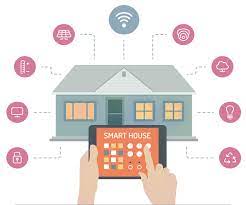In recent years, the proliferation of Internet of Things (IoT) technology has revolutionized various aspects of daily life, including home automation. This article delves into the realm of IoT for houses, exploring the best IoT systems available to enhance convenience, efficiency, and security within residential spaces.
The integration of IoT into residential environments has brought about unprecedented levels of connectivity and automation. From smart thermostats to security cameras, IoT systems for houses offer a myriad of benefits, ranging from energy conservation to enhanced safety. This article provides an overview of the top IoT systems tailored for home use. Also analyzing their features, functionality, and suitability for different households.
Google Nest:
Google Nest stands out as one of the leading IoT systems for houses. It’s offering a comprehensive suite of smart devices designed to streamline various aspects of home management. Key components include the Nest Learning Thermostat. Which adjusts temperature settings based on user preferences and occupancy patterns, thereby optimizing energy consumption. Additionally, the Nest Cam provides round-the-clock surveillance with features like motion detection and two-way audio communication, enhancing home security. Integration with the Google Assistant further enhances convenience, allowing users to control connected devices through voice commands.
Amazon Alexa Smart Home:
Amazon Alexa Smart Home is another prominent player in the IoT for house domain. They offering seamless integration with a wide range of smart devices. The Echo lineup serves as the central hub, enabling users to control lighting, entertainment systems, and even kitchen appliances through voice commands. With its extensive compatibility and third-party app support, Alexa empowers users to customize their smart home experience according to their preferences. Moreover, features like Alexa Guard enhance home security by detecting sounds of potential break-ins and sending alerts to the user’s smartphone.
Apple HomeKit:
Apple HomeKit distinguishes itself with its focus on privacy and security. It’s making it an appealing choice for users concerned about data protection. Through the Home app and Siri voice commands, users can control an array of HomeKit-compatible devices, ranging from smart lights to door locks. The platform’s robust encryption protocols ensure that sensitive information remains safeguarded from unauthorized access. Moreover, HomeKit’s intuitive interface simplifies the setup and management of connected devices. All of these making it accessible to users with varying levels of technical expertise.
Samsung SmartThings:
Samsung SmartThings offers a versatile IoT ecosystem that caters to diverse household needs, from energy management to home security. The SmartThings Hub serves as the central control unit, facilitating seamless communication between connected devices. Users can monitor and control their home remotely via the SmartThings app. Which offers a user-friendly interface and extensive customization options. Integration with popular third-party devices further expands compatibility, allowing users to create personalized automation routines tailored to their lifestyle.
Philips Hue Smart Lighting:
Philips Hue Smart Lighting specializes in illuminating homes with dynamic and energy-efficient LED bulbs that can be controlled remotely via a smartphone or voice commands. The Hue Bridge acts as the central hub, enabling users to create custom lighting scenes, schedules, and color palettes to suit different moods and activities. With features like geofencing, Hue lights can automatically adjust based on the user’s location, enhancing convenience and energy savings. Moreover, compatibility with major IoT platforms like Alexa, Google Assistant, and Apple HomeKit ensures seamless integration into existing smart home setups.
The advent of IoT technology has transformed traditional houses into intelligent, interconnected spaces that offer unparalleled convenience, efficiency, and security. From Google Nest to Philips Hue, a diverse array of IoT systems cater to different preferences and requirements. It’s empowering users to customize their smart home experience according to their needs. As technology continues to evolve, the possibilities for innovation in the realm of IoT for houses are boundless. Promising even greater levels of automation and integration in the future.







